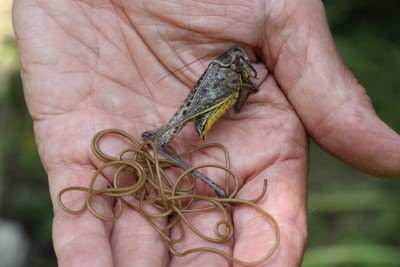
Wolf worm larvae, scientifically known as **Cuterebra**, are the larval stage of a type of bot fly. When they infest rodents, they can cause all sorts of health issues for their tiny hosts. That’s a big concern for anyone managing rodent populations, whether you’re a homeowner, a farmer, or a wildlife enthusiast. Luckily, there are effective control tips to manage these worms and keep rodent colonies healthier. Let’s dig in!
What Are Wolf Worm Larvae?
To truly grasp why wolf worm larvae matter, it helps to understand what they are. These larvae are parasitic, meaning they depend on a host organism—in this case, rodents—to thrive. When a female bot fly lays her eggs, they attach to the fur of a rodent. Once the eggs hatch, the larvae burrow into the rodent’s skin, often settling in areas around the neck or back.
This might sound alarming, but it’s nature at work. The larvae feed on the host’s tissue for a period, which can lead to infections or other health issues for the rodent. Think of it like a tiny burglar setting up camp in your home—only this burglar is literally eating you out of house and home!
Signs of Infestation
So, how can you tell if wolf worm larvae have taken up residence in a rodent colony? Here are some signs to look out for:
- Visible larvae: Sometimes, you can actually see the larvae protruding from the rodent’s skin.
- Wounds or sores: The areas where the larvae are infesting can become red, irritated, or infected.
- Behavioral changes: Infected rodents may become more withdrawn or less active.
If you’re noticing any of these signs, it’s time to take action! The quicker you act, the better the chances of reducing the impact of these pesky larvae on your rodent population.
Impact on Rodent Health
Let’s talk about why wolf worm larvae are a big deal for rodent colonies. When a rodent is infested, it can experience a range of health problems. Typically, the inflammation caused by the larvae can lead to secondary infections, which might require veterinary attention.
Imagine feeling sick because of an unwanted guest in your home. You wouldn’t just ignore it, right? Rodents can end up being quite vulnerable, leading to potential declines in their health and overall population size. This can affect the entire ecosystem, especially if those rodents are essential for seed dispersal or as prey for larger animals.
Here’s the thing: by managing wolf worm larvae, you’re not just helping individual rodents—you’re supporting the balance of an entire ecosystem.
Prevention Strategies
Now that we understand the importance of tackling wolf worm larvae, let’s discuss some effective prevention strategies. It’s much easier to stop an issue before it starts than to deal with an infestation later.
- Regular inspections: Keep an eye on rodent populations, especially in areas where they gather frequently.
- Maintain clean environments: Reducing clutter and waste can lower the chances of infestations.
- Use natural repellents: Essential oils like peppermint or eucalyptus can deter bot flies from laying eggs.
By taking these simple steps, you can create an environment that’s less hospitable to wolf worm larvae. It’s like setting up a security system that keeps unwanted guests away!
Control Methods for Infested Colonies
If you find that some of your rodent colonies are already infested with wolf worm larvae, don’t panic. There are several ways to manage the situation effectively.
First off, you can consult a veterinarian for any infected rodents. They may need treatment to remove the larvae and heal from any infections. Additionally, you can:
- Consider humane traps: Traps can help remove infested rodents, allowing for population control and reducing the spread of larvae.
- Encourage natural predators: Owls, hawks, and snakes can help keep rodent populations in check, thus reducing the chance of larvae infestations.
It’s crucial to approach control methods mindfully, ensuring that you’re not just solving one problem but thinking holistically about the ecosystem.
When to Seek Professional Help
Sometimes, despite your best efforts, a wolf worm larvae infestation can spiral out of control. If you notice a significant decline in rodent health or an overwhelming presence of larvae, it might be time to call in the pros.
Pest control experts can provide insights and interventions that are safe for both the rodents and the environment. They can also help you understand the larger picture of rodent management. Plus, having an expert on your side can bring peace of mind, knowing you’re tackling the issue effectively.
Wolf worm larvae may seem like a daunting issue in rodent colonies, but with the right control tips, you can keep your rodent populations healthy and thriving. Whether through prevention, humane control, or professional help, you have options to manage these pesky invaders.
In the grand scheme of pest management, it’s all about balance. By respecting nature’s cycles while also protecting your spaces, you can make a significant difference. So the next time you think about rodent colonies, remember: with the right knowledge and strategies, you can keep those wolf worm larvae in check!
